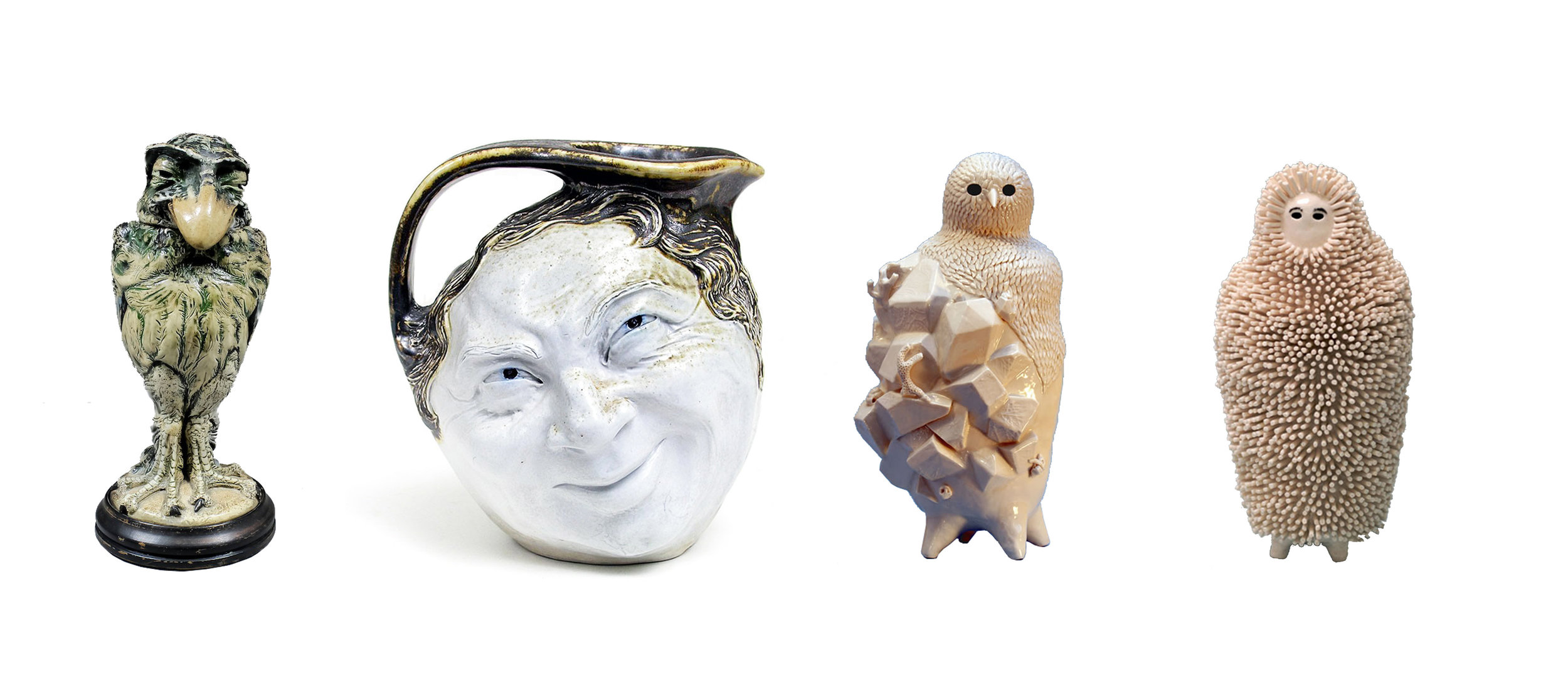The design cognoscenti are inevitably able to recognise the work of the Martin Brothers from forty paces away. I was a little unsure what to think when I saw their work first; their pieces appeared grotesque, their perceptive beauty slowly growing with time. And after their beauty has revealed itself, there is no going back. You’re hooked.
Edwin, Walter, Charles and Wallace produced their stoneware from the 1870’s until it petered out in 1923 after the First World War. Started in Fulham and ending in Middlesex, the pottery worked mainly with saltglazes. Their sculpted characters have a knowing anthropomorphism, best captured in their eye detail; a dry humour, a withering look. A look that Mr Carson the butler might give Daisy the maid or the pigeon on the sill or the natural history museum may give the dodo. In recent years their work has become incredibly sought after for its brilliance. Meticulous attention to detail, individualised strands of humour and a packaged idolisation of nature sets their work apart. Their birds are marvellous, and have the same effect as watching Hitchcock’s ornithological thriller – your perception of nature is slightly altered afterwards. The knowingness of the stoneware birds is menacing.
Contemporaneously, there are some excellent art ceramics being crafted by artists such as Sophie Woodrow in Bristol. I admire her work, evolved from misrepresentations of natural-world discoveries by the confident globe-trekking Victorians. Her visual language is distinctive, a fragility of material and colour. Anthropomorphic details almost become skeuomorphic, as each piece takes on a life and identity of its own. Again, you find yourself wondering if the figures are looking back at you with their hollow eyes.
Martinware & Sophie Woodrow
